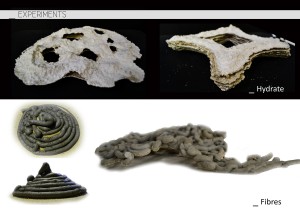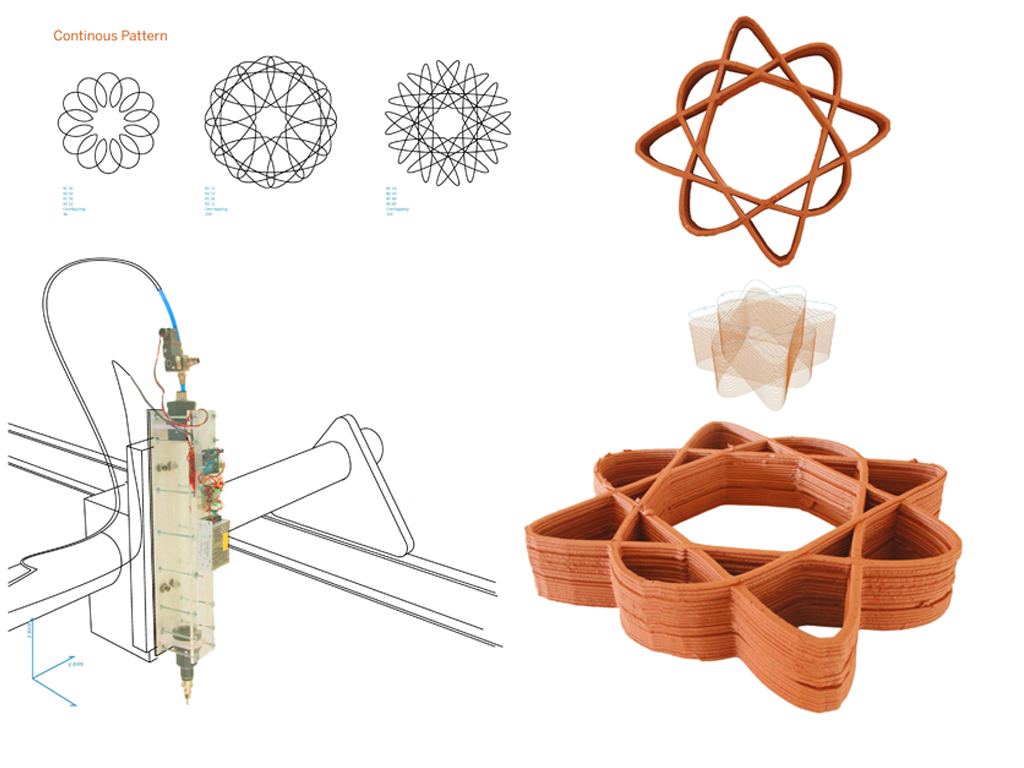The process involved the study and research of different kinds of compounds and chemicals mixed with iron filings that self arranged between two or more magnets of opposite poles. It also involved the study of what kind of connections could be made using this material between two magnets.
After understanding the typologies of forms and connections that would be possible, the focus was shifted to creating 3 dimensional networks and two dimensional surfaces using the magnetic methodology. The realization that we would be able to build complex three dimensional networks using predefined trajectories encouraged us to start investigating a system that was set up such that the self assembling material computes the structure to be built depending on the external form of each element.
In the present, efforts are being channelized towards building a device that can work in a shopbot/KUKA environment to create magnetic structures using a feedback system of artificial vision in a sort of emergent and self evolving basis.














